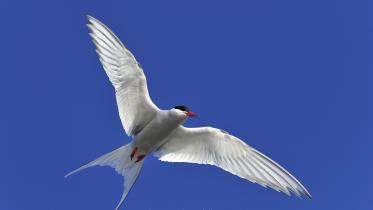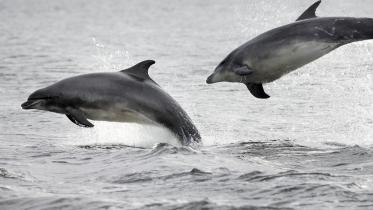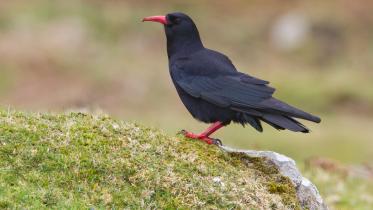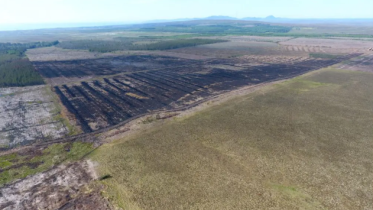Standing advice for planning consultations - Great Crested Newts
This is standing advice to help planning applicants seeking permission for development that could affect great crested newts and to assist planning officers and other regulators in their assessment of these applications. It avoids the need for us to advise on individual planning consultations in relation to great crested newts. We will only provide further advice in exceptional circumstances that are not covered by this standing advice.
Consideration of protected species in development management
Scottish Planning Policy requires that the presence (or potential presence) of legally protected species is factored into the planning and design of development proposals and that any impacts on protected species are fully considered prior to the determination of planning applications.
Where impacts on a protected species cannot be avoided, certain activities may only be undertaken with a licence from NatureScot. It is important that any licensing issues are considered as part of a planning application to avoid any unnecessary delay to a development proceeding.
Legal protection for great crested newts
There is no change to the protection of European Protected Species (EPS) as a result of EU Exit.
Great crested newts are classed as EPS under the Conservation (Natural Habitats, &c.) Regulations 1994 (as amended). There is no change to the protection of European protected species as a result of EU Exit. It is therefore an offence to deliberately or recklessly:
- kill, injure, capture or harass a great crested newt;
- disturb a great crested newt whilst it is using any structure or place for shelter or protection (e.g. a pond or hibernation site), or in any way that impairs its ability to survive or breed, or significantly affects the local distribution or abundance of great crested newts;
- obstruct access to a great crested newt breeding site or resting place, or otherwise prevent their use.
And whether or not deliberate or reckless:
- to damage or destroy a great crested newt breeding site or resting place.
This means that if great crested newts could be affected in these ways by a development and no action is taken to prevent it, an offence may be committed. The advice below will help ensure that impacts on wildcats are minimised and no offences occur.
When a development might affect great crested newts
Great crested newts are mainly found in central and southern Scotland, with more isolated records around Inverness and other parts of Highland. For the latest map of great crested newt distribution see the National Biodiversity Network Atlas. The NBN Atlas map indicates the broad pattern of distribution across Scotland but cannot provide detailed information for individual development sites. Local Record Centres may have additional information that can help determine if great crested newts are likely to occur on a site.
They breed in small to medium-sized freshwater ponds, but also live on land in lowland grassland, scrub, hedgerows or woodland, normally within 500m of breeding ponds. They hibernate over winter (October-February) under deadwood, among tree roots, rocks and piles of rubble, or in mammal burrows. When active on land at other times of the year they continue to use similar refuges or dense vegetation for resting up during the day. Great crested newts are often found on the fringes of urban areas, including previously built-up brownfield sites, and where they are very vulnerable to impacts from new development.
A great crested newt survey should be carried out where a proposal is within 500m of a possible breeding pond.
Carrying out a great crested newt survey
Surveys should be done by persons with the appropriate knowledge of great crested newt ecology and practical experience of great crested newt survey work. Details of methods and survey standards are provided in Great Crested Newt Mitigation Guidelines (English Nature 2001).
Potential breeding ponds should be surveyed between March and June. Surveys of terrestrial habitat can be undertaken between March and September. Precise timing of surveys will depend on the methods used:
Ponds
- torch survey - mid-March to mid-June (August to find larvae);
- netting - mid-March to mid-June (August to find larvae);
- bottle or funnel trapping - March to May;
- egg search - April to June;
- eDNA analysis - mid April to June (to test for presence or absence).
Terrestrial
- pitfall traps - March, April, May and September;
- refuge search - April to September.
Emergence from hibernation and timing of migration to breeding ponds will be a few weeks later in the Highlands. As a guide, great crested newts will start moving to breeding ponds when air temperature is consistently above 5°C. All the survey methods except eDNA analysis can cause disturbance to great crested newts and will require a survey licence from NatureScot (contact [email protected]).
The survey information needs to be sufficiently up-to-date when a planning application is submitted. Pre-application great crested newt surveys normally remain valid for two more survey periods, and should be repeated if the application is going to be delayed beyond the start of a third survey period. Unless it is clearly evident that there has been no substantive change in number, distribution or activity of great crested newts since the original survey was undertaken.
Reporting survey results
If a development proposal has needed a great crested newt survey, a survey report must be submitted as part of the planning application. The report should include:
- names and experience of surveyors;
- details of any information gathered from Local Record Centres or other sources;
- descriptions of the habitat surveyed and any limitations to the survey, such as water depth or access;
- survey methods, including survey area, date, time, and weather conditions;
- map showing the location of any traps and the locations of great crested newts;
- an assessment of the number of great crested newts affected and the importance of the development site for great crested newts in context of surrounding habitat;
- an assessment of how the development might affect great crested newts.
If great crested newts could be affected by the proposal, the report must include a protection plan. The plan should include:
- measures proposed to minimise impacts on great crested newts, including annotated maps and/or photographs showing the location of any measures proposed and how they relate to survey information and construction work;
- a summary of any residual impacts once the above measures are taken into account;
- details of any licensing requirements.
Measures to minimise impacts on great crested newts
Measures to minimise impacts on great crested newts should follow a hierarchy of avoidance, mitigation and compensation:
Avoidance
- Design the development and construction methods to avoid damage or disturbance to great crested newt habitat.
Mitigation
- Alter vegetation types to displace great crested newts from areas affected (so long as there is suitable alternative habitat nearby).
- Erect amphibian fencing to prevent great crested newts moving into areas where they will be at risk.
- Translocate great crested newts to another area of suitable or specially prepared habitat. This can be a significant operation and should only be considered as a last resort.
All these mitigation measures could cause damage or disturbance to great crested newts and will require a licence from NatureScot.
Compensation
- Restore or improve habitat to replace lost habitat or habitat connectivity.
Details of these measures and their implementation are provided in Great Crested Newt Mitigation Guidelines (English Nature 2001).
For all development proposals where great crested newts are a consideration, pre-construction surveys should be timetabled into project plans. This is to enable checks for any changes in distribution following the original survey, and to ensure the measures proposed to minimise impacts on great crested newts remain appropriate. Pre-construction surveys should be completed as close to the start of works as possible, and always within the most recent survey period.
Licensing development works affecting great crested newts
Licences for development works that would otherwise result in an offence with respect to EPS, such as great crested newts, can only be issued if it can be demonstrated that the following three tests are all met:
Test 1 - that the purpose of the licence is to preserve public health or public safety or for other imperative reasons of overriding public interest, including those of a social or economic nature and beneficial consequences of primary importance for the environment.
Test 2 - that there is no satisfactory alternative.
Test 3 – that the proposed action will not be detrimental to the maintenance of the population of the species at a favourable conservation status in their natural range.
For advice on applying Tests 1 and 2 see our guidance European Protected Species Licensing Test 1 – Licensable Purpose and European Protected Species Licensing Test 2 – No satisfactory alternative. For advice on applying Test 3 and whether or not a licence is likely to be granted, planning applicants and planning applicants may contact the NatureScot licensing team. An up-to-date great crested newt survey and a great crested newt protection plan for the proposed development must be submitted with the enquiry, together with details of the development proposals. We would normally only expect these enquires when proposals may lead to the damage or destruction of breeding pools or hibernacula, or may restrict access by great crested newts to these structures
Guidance on applying for a great crested newt licence for development purposes, along with the application form can be found on our website. For further information on protected species licensing see Protected Species Licensing: Legislation, Appropriate Authorities and Licensing Purposes.



